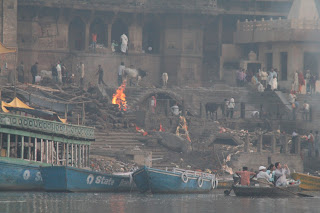We are touring China and Tibet with National Geographic Tours and arrived in Beijing the day before the tour starts, so on our own for one day. We made arrangements to be picked up at the airport and taken to our hotel and so glad we did as Beijing has a population of 20 million! It seemed like the transport to the hotel took about 50 minutes with numerous turns, twists, uturns etc. Every road in Beijing has bicycle and electric scooter and tuck tuck lanes and the license plates have letters that designate what days of the week you can drive your car in the city.
The hotel was located in an older section of the city and the only non-Chinese folks were tour groups. When buying items at the convenience store or supermarket, the clerks rang in the items and then showed the amount needed on the calculator or till screen. Worked just fine.
All the hotels we stayed at in China were non-smoking, but all the Chinese smoked anyway, just stood out in the hall or the exit stair entrance and smoked up a storm.
We went out exploring with our trusty city map and after a 45 minute walk ended up at Tiananmen Square, at least across the street from it.
 |
| One of the gates into Tiananmen Square |
We met our guide Leah and she has been leading tours for about 15 years and says that she will show us the real China, not the "tourist China". Hence the hotel in an older section of the city. The area we stayed has numerous streets with older homes that have no water and/or bathroom facilities, so the city or government has built really nice communal facilities where the people can get water, shower, do laundry etc.
First night dinner was delicious - Peking Duck and ten or twelve or more delicious, tasty side dishes. The duck was sliced and you wrap it in these little crepe like shells with a sauce, shredded spring onions and cucumber. So yummy.
Tiananmen square is the largest square in the world and is considered by some to be the symbolic center of the Chinese psyche. Although there are old city gates at two ends of the square, once inside it is a huge concrete space with Soviet style buildings down both sides. Built by the Communists under Mao, the original use was mostly to parade and review up to a million people. Although supposedly the peoples square it is strictly controlled by the government. Entrance to the square has tight security with everything being x-rayed. My impression of the square was: a) a huge monument to Mao and other founders of the Communist Party and b) a huge tourist draw, both of Chinese Nationals and Foreigners.
 |
| Inside Tiananmen Square |
Beijing is also home to the largest Imperial Palace in the world, known as "The Forbidden City", named this as it was off limits to anyone but the Imperial families and their government ministers, etc., for around five hundred years, 1368 - 1911. The place is huge as it covers around 170 acres with 90 courtyards and palaces, 980 buildings and 8,704 rooms. I think concubine number 1011 had her own room!
 |
| One of the Imperial Courtyards |
 |
Stairs to one of the Imperial Halls.
|
The marble that was used throughout the Palace was transported a couple of hundred kilometers, by waiting for the winter season and spreading water on the roadways to form ice and then the marble could be moved by workers pulling sleds.
 |
| Used to store water for fire suppression. |
Close to the Forbidden City, is the Temple of Heaven Park, a lovely green space within the city and frequented by locals doing Tai-Chi, playing card games, practicing opera, etc.
 |
Temple of Heaven
|
Today the Great Wall of China - WOW - it was rainy and cold but so worth coming here. Most of our group, there are 15 of us, 7 from Canada, 4 from the UK, 2 from Malta, 1 from the USA and 1 from Australia, took the Gondola from the entrance gate to the wall, but Loreen and I and the couple from Malta walked up 1200 steps from the entrance to get onto the wall. Again it was well worth it, as I tried to imagine what people went through building these steps and then packing materials up them to build the wall itself.
 |
| Stairs to the Great Wall |
The wall is approximately 2000 years old and although only portions of it are open to the public you can see it for miles winding its way over the tops of mountains and mountain ridges.
 |
| Section of the Great Wall |
Many independent Chinese Kingdoms would build walls around both the kingdom and individual cities to protect from invaders and other kingdoms. When China was unified the Emperor had the various walls linked and established watch towers where soldiers could warn of invading troops.
 |
| Interior of a watch tower. Great place to spend your month on duty. |
The wall took hundreds of thousands of workers some ten years to build. It is rumoured that around 180 thousand cubic meters of dirt, as well as the bones of the deceased workers, was used as fill material for the inside of the wall.
 |
| The Great Wall both close and in the distance. |
Although the wall was built to protect China from invaders both the Mongols ( for 90 years) and the Manchurians (for 250 years) managed to get through the wall and conquer China.








































